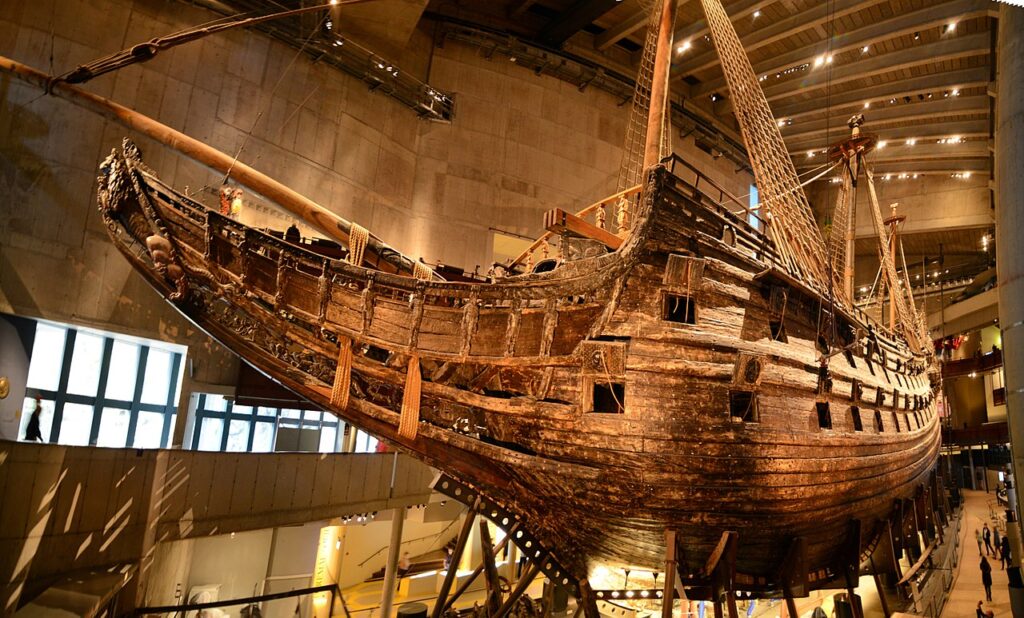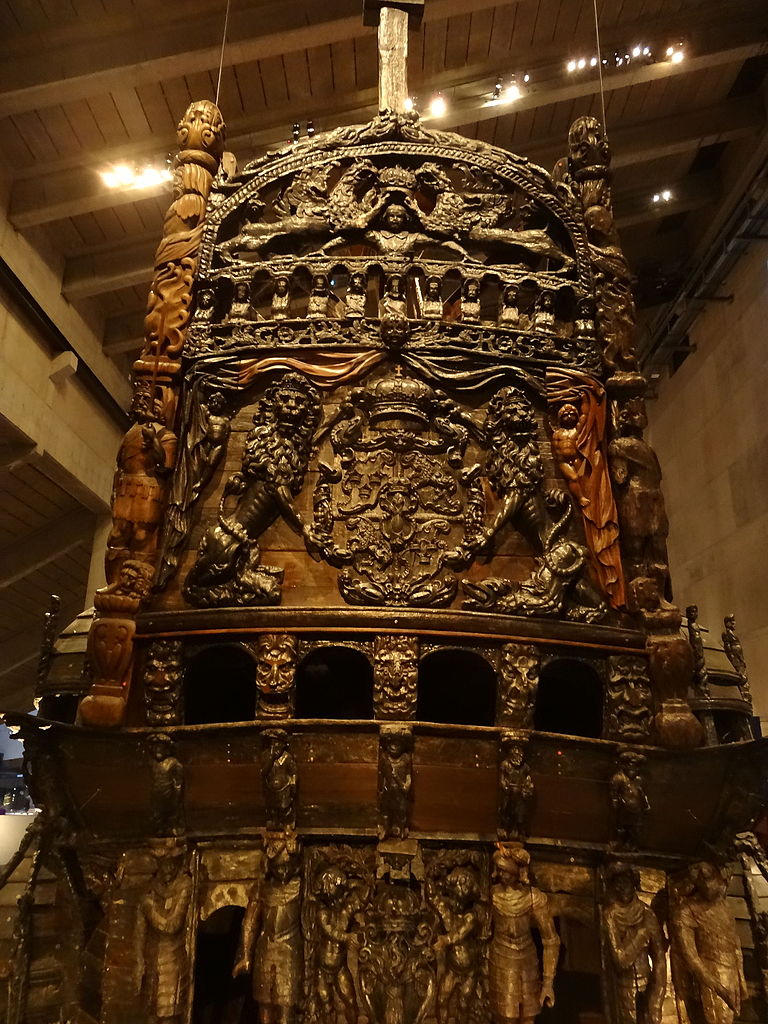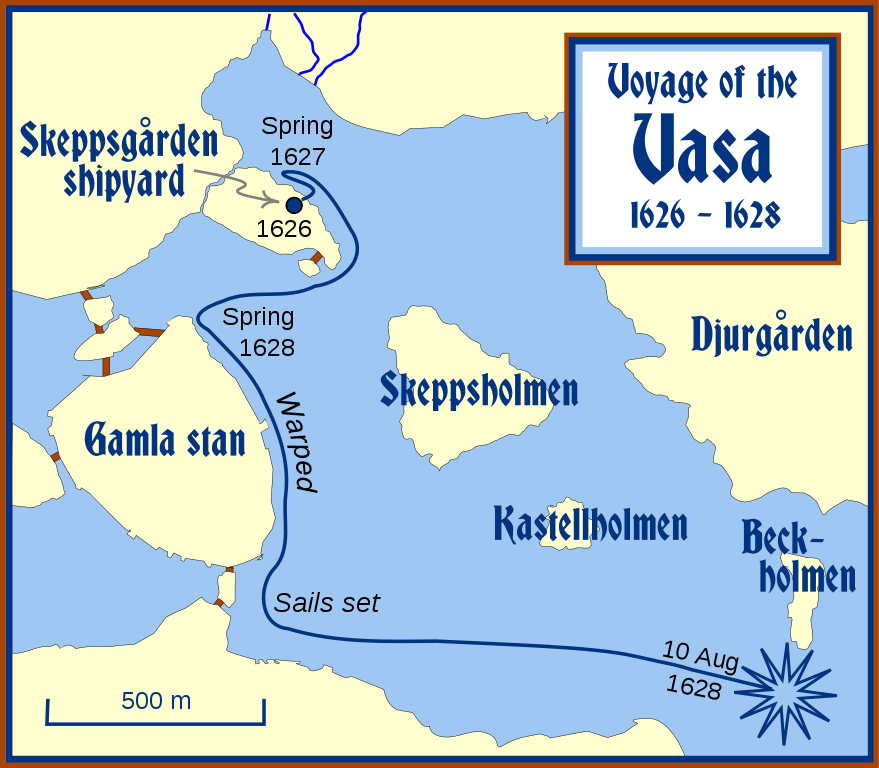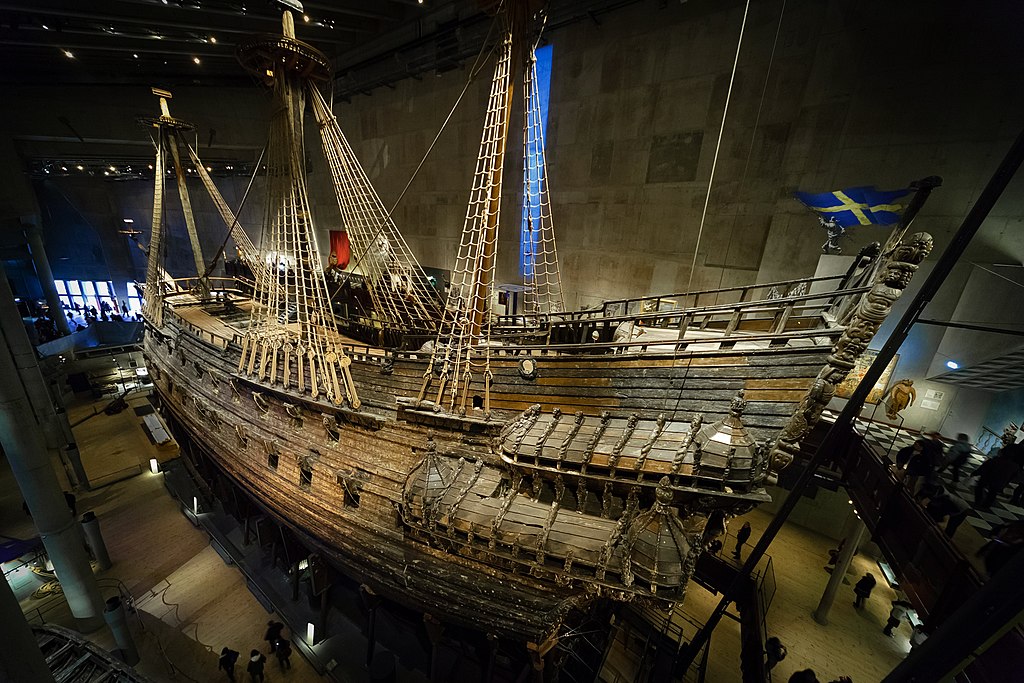After a long time of being a peripheral and minor kingdom in Northern Europe, Sweden developed into one of the major powers in the continent in the 17th century. The country rose to prominence during the reign of king Gustavus Adolphus (1611-1632), seizing territories from neighboring states and becoming the dominant power in the Baltic Sea.
The outbreak of the Thirty Years’ War and an ongoing conflict against the Polish–Lithuanian Commonwealth threatened the expansion of Swedish influence in Northern Europe in the early 17th century. During this time, the Swedish Navy suffered heavy losses, with various ships destroyed in battle, captured by enemies, or wrecked by storms. Also, many of the Swedish ships were small to medium-sized, while other European powers had much larger vessels. So, the king ordered the construction of a series of large and heavily armed warships, the first of which was called Vasa, after the name of the royal house that ruled the country at that time.
Vasa in the Vasa Museum in Stockholm (Jorge Láscar, Flickr, CC BY 2.0).
In 1625, a Dutch shipbuilder named Henrik Hybertsson and his business partner Arendt de Groote signed a contract with the Swedish king to build four new ships, two larger ones and two smaller ones. Construction of the first vessel began in 1626 in the shipyard of Stockholm, when the keel of Vasa was laid. However, Hybertsson was already ill and had to hand over the project to his assistant, Hein Jakobsson. Hybertsson died in the spring of 1627, before the ship was completed.
The vessel was richly adorned with sculptures and decorations that were meant to showcase the power of the king. These eleborate decorations took a large portion of the construction cost, and many depict fantastic creatures such as mermaids and sea monsters, while others feature biblical and nationalistic symbols, as well as historical and mythological figures.
Decorations on the stern of Vasa (Jonathan Cardy, Wikimedia Commons, CC BY-SA 3.0).
When completed, Vasa was 69 meters long and 52 meters tall, and one of the most powerfully armed ships in the world, with 64 bronze cannons crammed in a relatively small space. This large concentration of artillery also required a huge amount of gunpowder. Overall, the vessel had too much weight on the upper structure, and became really unstable. In the summer of 1628, a stability test was conducted on the ship. Thirty men ran back and forth the upper deck, but after only three trips they were ordered to stop, as the ship was at risk of capsizing. Nevertheless, Gustavus Adolphus insisted that the vessel should be inaugurated as soon as possible.
On August 10, 1628, the ship was moved to the southern side of the harbor of Stockholm and finally set sail. The vessel had only traveled for 1,300 meters when a gust of wind hit her sails, causing the ship to heel to port. The open lower gunports ended up being under the surface, causing water to enter the lower decks of the ship. Within minutes, Vasa sank to a depth of 32 meters, just 120 meters off the shore. Thousands of people, including foreign ambassadors, witnessed the disaster, and various boats rushed to help the sailors. At least 30 people perished in the sinking.
Voyage of Vasa from the shipyard to the location where it sank in Stockholm (MapMaster, Wikimedia Commons, CC BY-SA 3.0).
At that time, Gustavus Adolphus was in Poland, and news of the disaster only reached him two weeks later. The king angrily demanded an inquest into the disaster, which was launched soon afterwards. In the end, Gustavus Adolphus only set foot on the ship once, while visiting the shipyard where the vessel was being built in January 1628. All the surviving members of the crew were questioned but no one was willing to take the blame. Sailors and shipbuilders accused each other, while officials claimed innocence. The blame fell on the deceased Henrik Hybertsson, accused of the faulty design of the vessel, and in the end no one was punished or found guilty.
Various attempts at recovering the ship were made, but they failed as the vessel was firmly stuck in the mud. Between 1663 and 1665, a team of divers brought up almost all the cannons of Vasa, and afterwards no more attempts at raising the ship were made for centuries. In 1920, a wreck removal company asked for a permit to blow up the ship and use the wood to make furniture, but the Swedish authorities refused.
In 1956, marine technician and amateur archaeologist Anders Franzén, located the shipwreck and convinced the Swedish Navy to investigate the possibility of recovering the vessel. The difficult operation took years, and the ship was slowly lifted, with various objects from Vasa gradually brought back to the surface. The final lift was made in April 1961, and on April 24 thousands of people witnessed Vasa finally emerging from the waters.
The ship was displayed in the newly constructed Vasa Shipyard (Wasavarvet), where visitors could see the recovered vessel. However, the small space made visits and conservation efforts difficult. Meanwhile, the ship was slowly dryed, and only after decades it would be completely stable. The ship was moved to a new exhibition space, the Vasa Museum, which was inaugurated in 1990 on the island of Djurgården, in Stockholm. This museum is now one of the most visited in the city, and features exhibits dedicated to the archaeological finds of the ship and the history of 17th-century Sweden.
Vasa in the Vasa Museum in Stockholm (L-BBE, Wikimedia Commons, CC BY 3.0)





